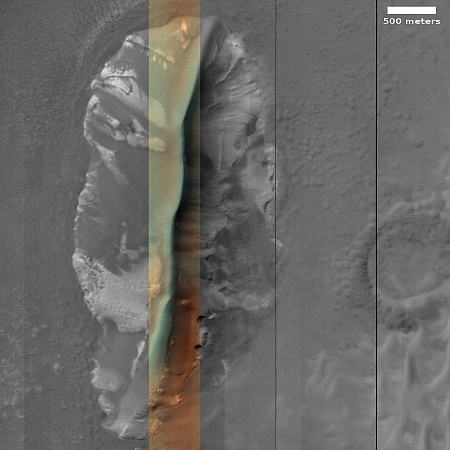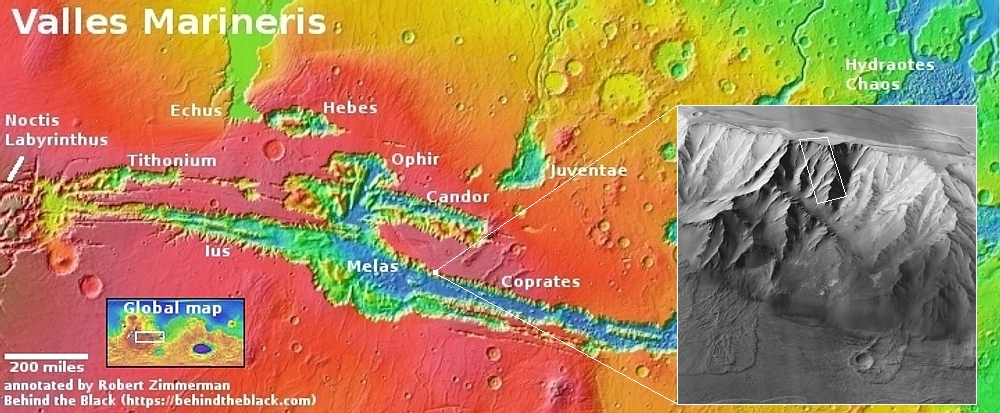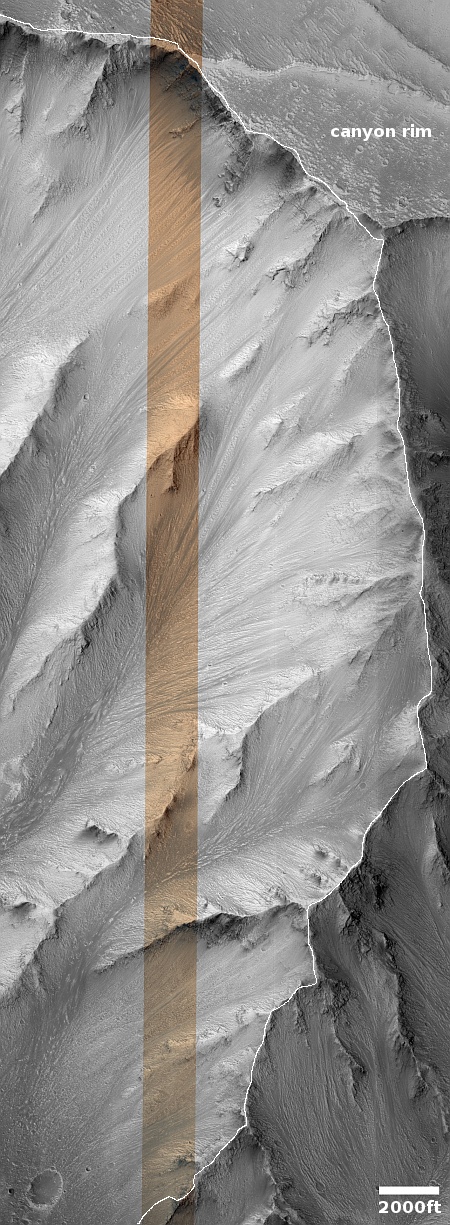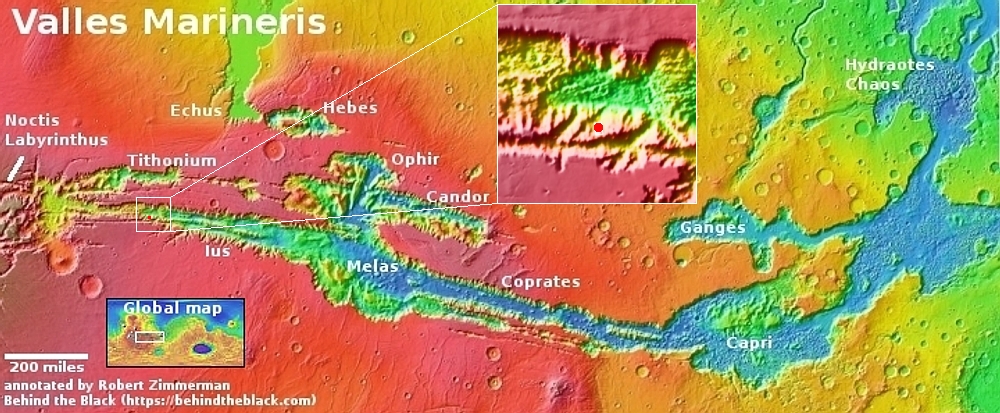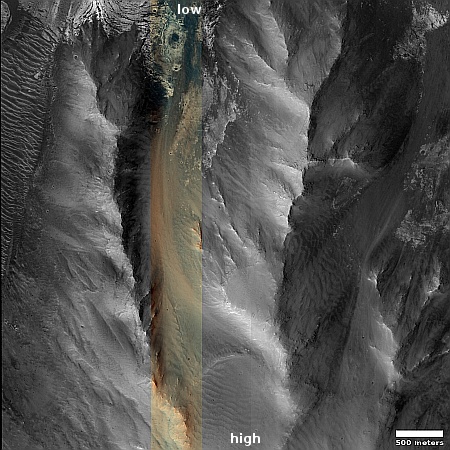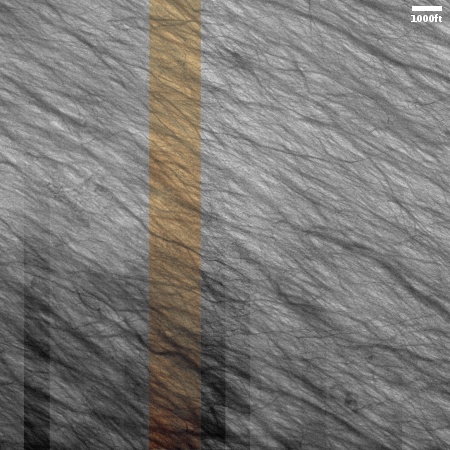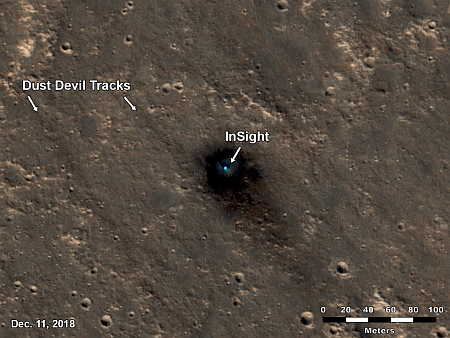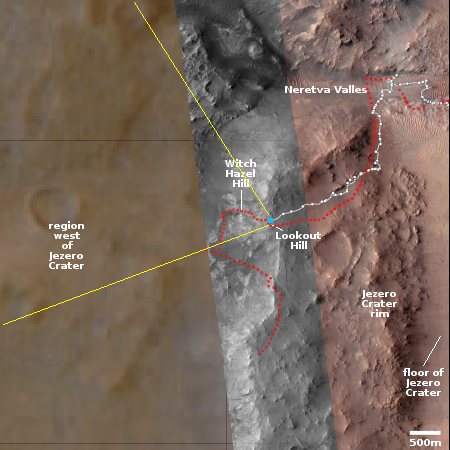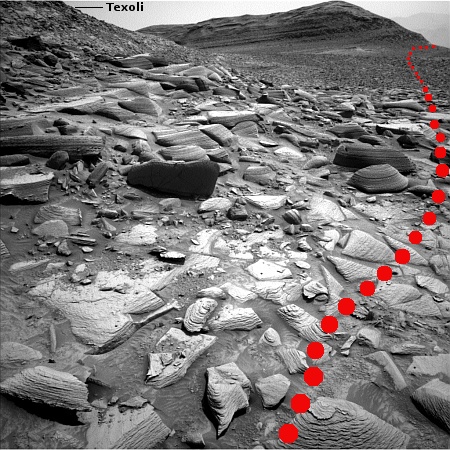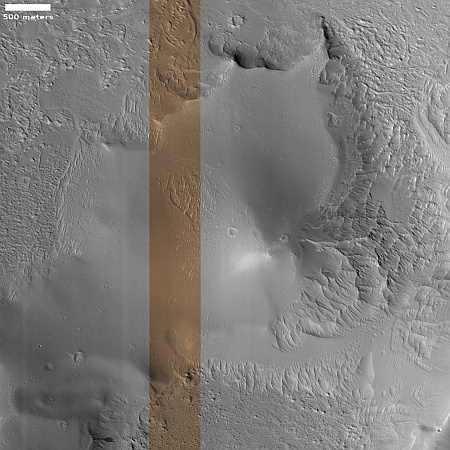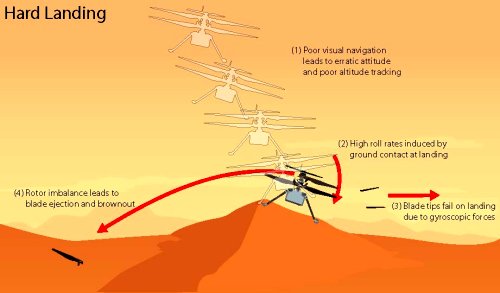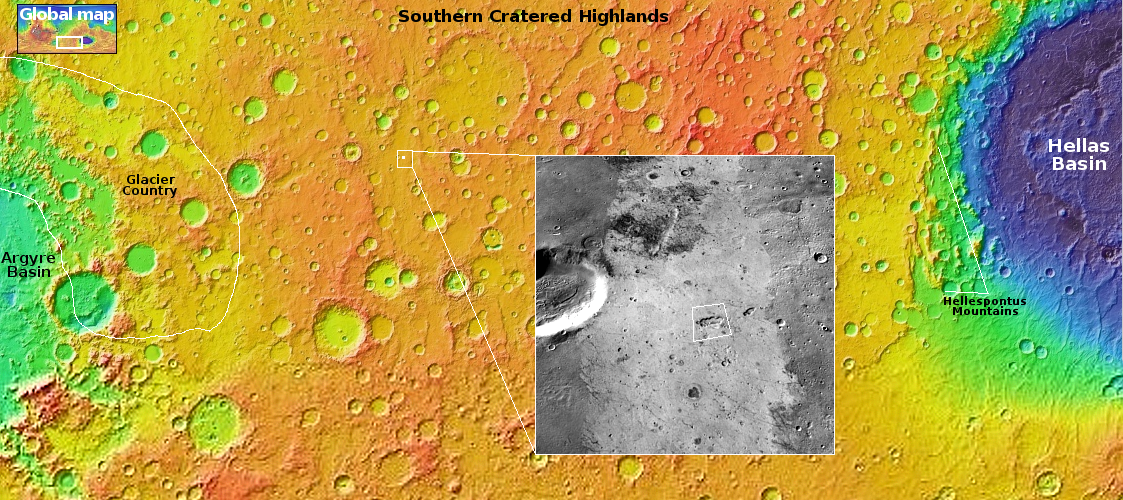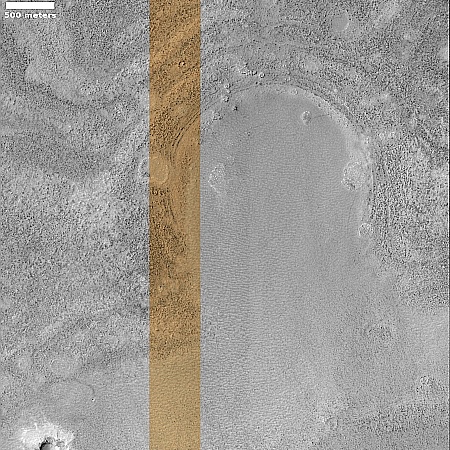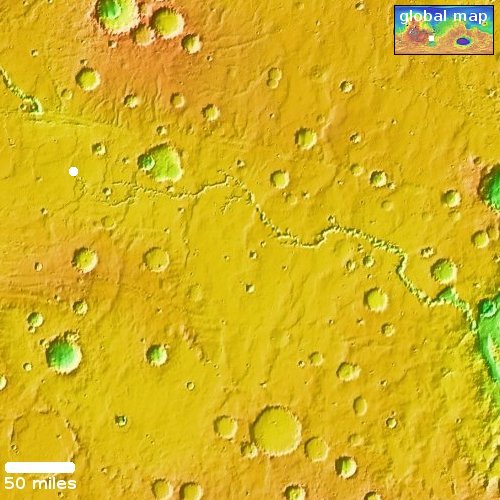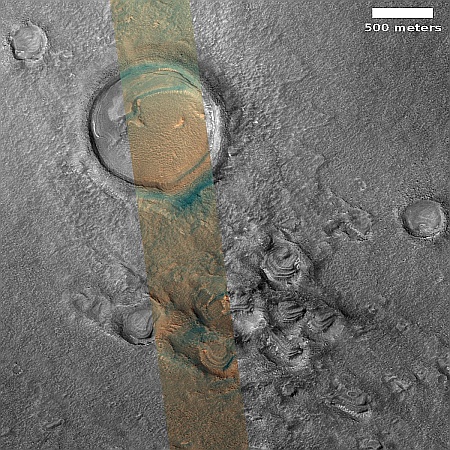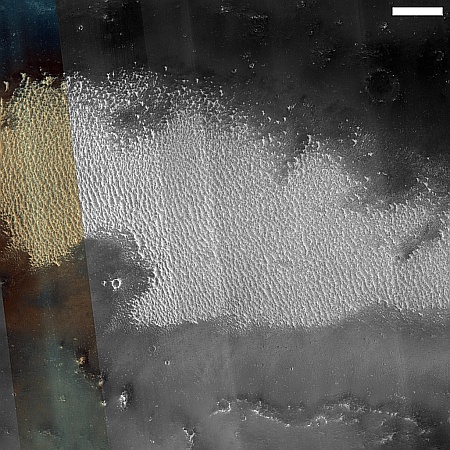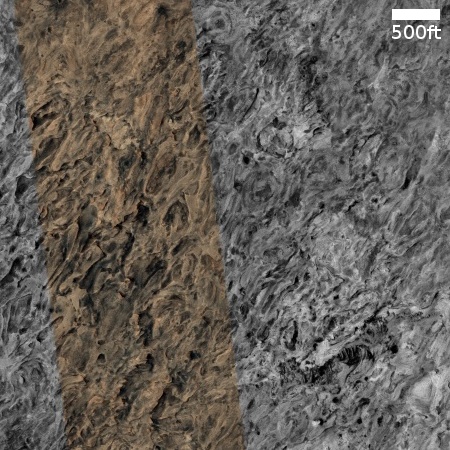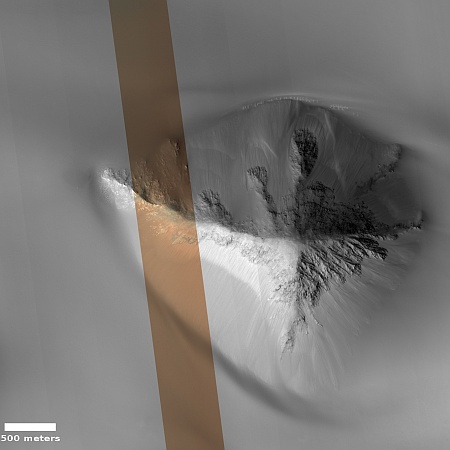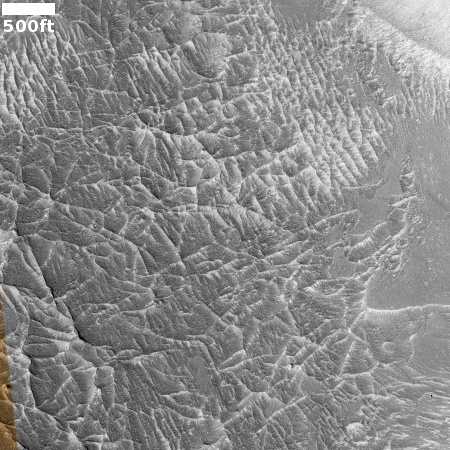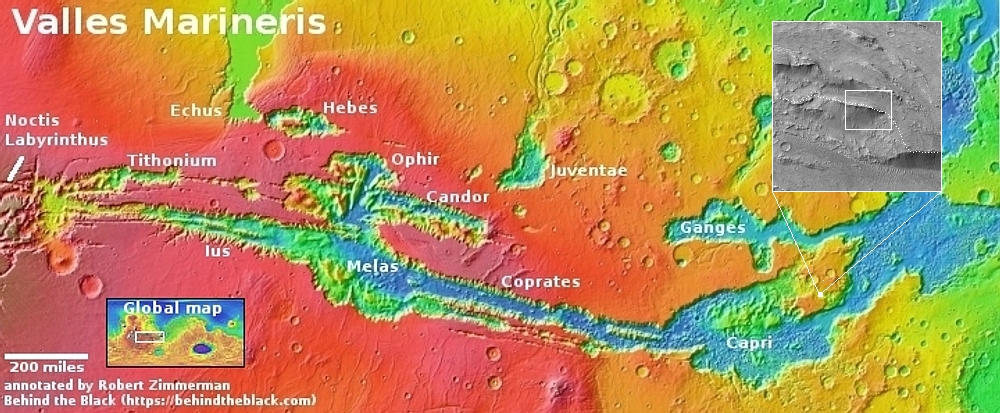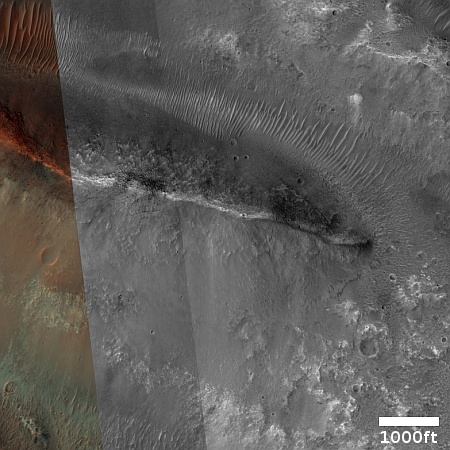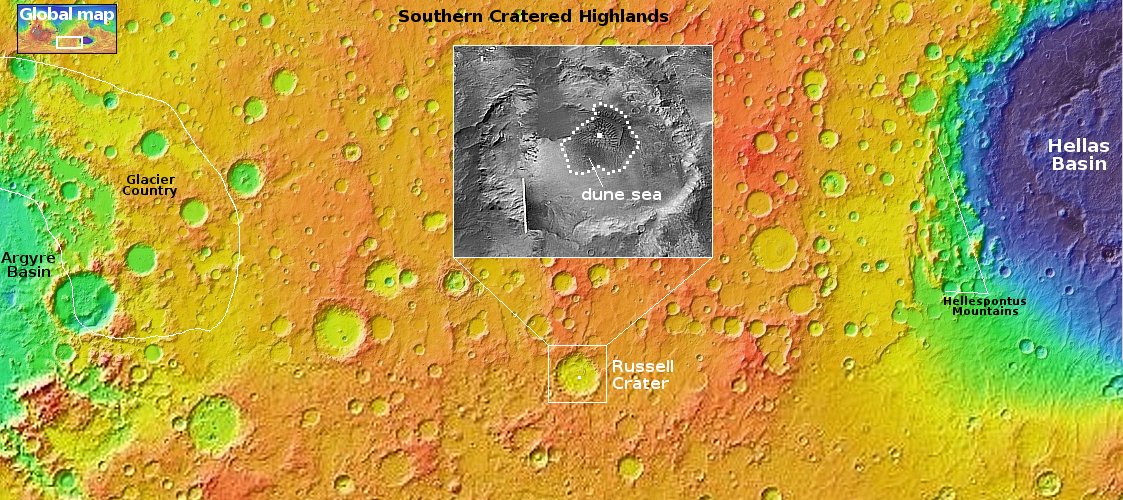A strange dune in the high southern latitudes of Mars
Cool image time! The picture to the right, rotated, cropped, reduced, and sharpened to post here, was taken on October 24, 2024 by the high resolution camera on Mars Reconnaissance Orbiter (MRO). I have also rotated the image so that north is to the top.
The scientists label this a “dune with seasonally persistent light-toned features.” As the location is in the high southern latitudes, only about 800 miles from the south pole, light-toned features should vary by seasons, as such features usually signal the coming and going of frost, whether it be water ice or dry ice. In this case however the light tones remain from season to season, which suggests the lighter colors are intrinsic to the ground and possibly signal some interesting geology or mineralogy.
The color strip down the center of the dune is an effort to decipher this question. According to the explanation about the colors [pdf] provided by the science team, the orange and light green probably indicates fine dust, while the greenish area along the ridge’s rim as well as its eastern slope suggests frost. Thus, based on the superficial information available to the public, the colors tell us little.
» Read more
Cool image time! The picture to the right, rotated, cropped, reduced, and sharpened to post here, was taken on October 24, 2024 by the high resolution camera on Mars Reconnaissance Orbiter (MRO). I have also rotated the image so that north is to the top.
The scientists label this a “dune with seasonally persistent light-toned features.” As the location is in the high southern latitudes, only about 800 miles from the south pole, light-toned features should vary by seasons, as such features usually signal the coming and going of frost, whether it be water ice or dry ice. In this case however the light tones remain from season to season, which suggests the lighter colors are intrinsic to the ground and possibly signal some interesting geology or mineralogy.
The color strip down the center of the dune is an effort to decipher this question. According to the explanation about the colors [pdf] provided by the science team, the orange and light green probably indicates fine dust, while the greenish area along the ridge’s rim as well as its eastern slope suggests frost. Thus, based on the superficial information available to the public, the colors tell us little.
» Read more

